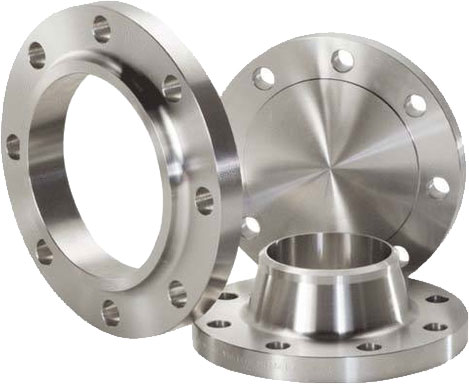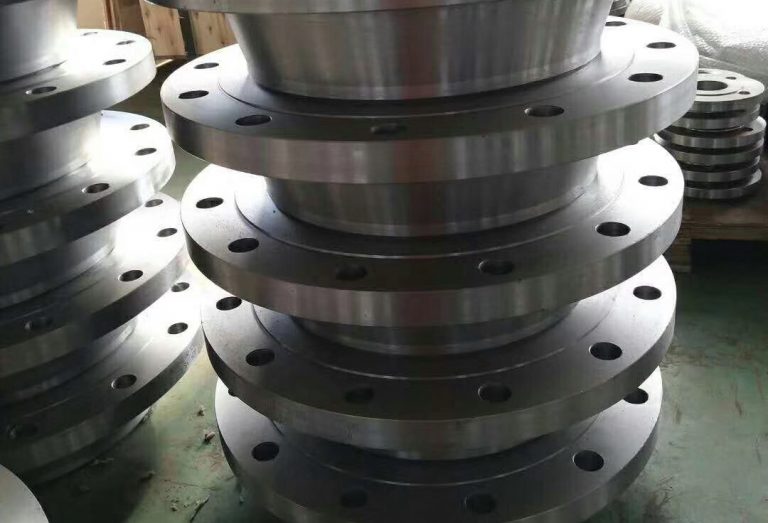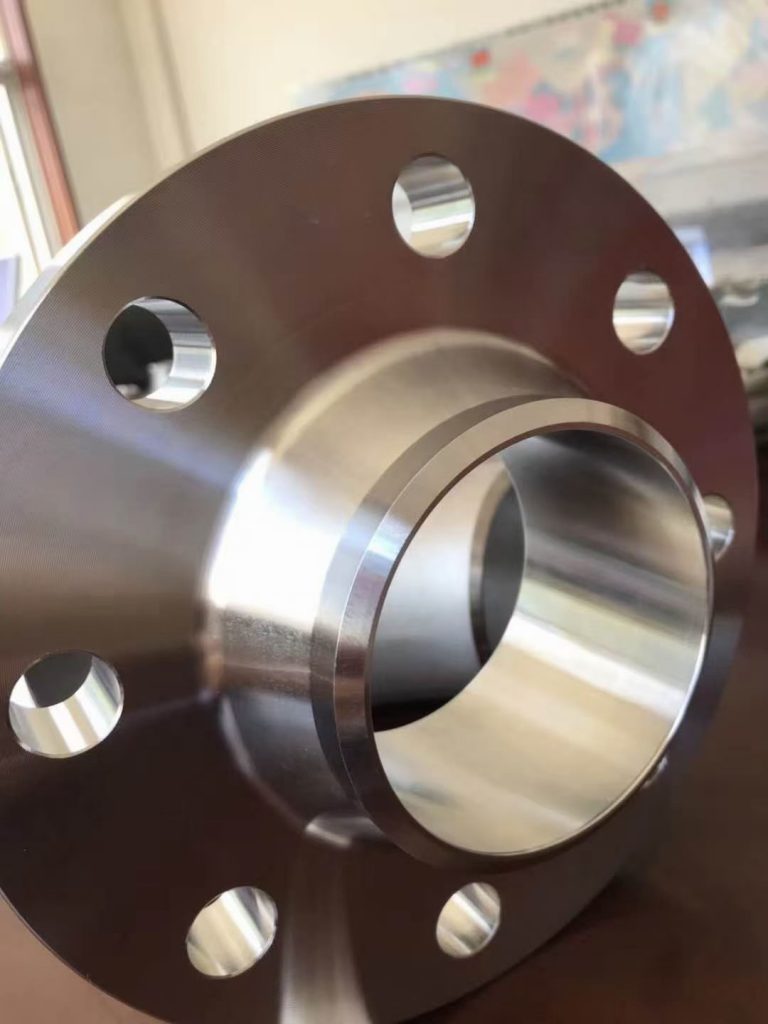In the realm of pipeline connections, the importance of flanges cannot be overstated. Among all types of flanges, ANSI flanges hold a special significance. This article aims to delve into the definition, features, and significance of ANSI standards in the industry. Additionally, we will highlight the expertise and authority of Hebei Yanhao Pipeline Equipment Co., Ltd. (YANHAO) in the field of flange manufacturing. Whether you seek information regarding industry standards for flange sizing or are in search of a supplier for ANSI flanges, this article will provide you with comprehensive information and professional guidance. Trust in YANHAO as the ANSI flange experts to help you navigate the right path.

Understanding ANSI Flange
A. Definition and Features
Definition: ANSI flange refers to a type of flange that conforms to the standards set by the American National Standards Institute (ANSI). ANSI flanges are commonly used in the United States and North America for various industrial applications.
Features of ANSI Flange:
- Standardized Dimensions: ANSI flanges adhere to specific dimensions and specifications outlined in ANSI/ASME B16.5 or B16.47 standards. These standards define the size, thickness, bolt-hole patterns, and other dimensions of the flanges, ensuring compatibility and interchangeability between different manufacturers’ ANSI flanges.
- Wide Range of Sizes and Pressure Ratings: ANSI flanges are available in a wide range of sizes, from small diameters to very large sizes, allowing for their use in different piping systems. They also come in various pressure ratings, allowing for the selection of flanges suitable for specific operating conditions.
- Bolt Hole Patterns: ANSI flanges have a specific pattern of bolt holes that facilitates easy and secure attachment to pipes, valves, or other equipment. The bolt holes are evenly spaced around the flange, enabling uniform distribution of forces and ensuring a strong and reliable connection.
- Face Types: ANSI flanges have different face types, such as raised face (RF), flat face (FF), and ring-type joint (RTJ). The raised face provides a sealing surface for gaskets, while the flat face allows for direct sealing without a gasket. The ring-type joint face is used when a metal-to-metal seal is required.
- Material Compatibility: ANSI flanges can be made from various materials, such as carbon steel, stainless steel, alloy steel, or other suitable materials. The selection of the material depends on the application requirements, including pressure, temperature, and the nature of the fluid or gas being transported.
- Flange Classes: ANSI flanges are classified into different pressure classes, such as 150#, 300#, 600#, 900#, 1500#, and 2500#. Each class represents a specific pressure rating and determines the flange’s ability to withstand pressure without leakage.
- Versatility and Application: ANSI flanges are widely used in industries such as oil and gas, petrochemical, power generation, water treatment, and more. They are suitable for connecting pipes, valves, and equipment in various applications, including pipelines, refineries, chemical plants, and offshore platforms.
Overall, ANSI flanges are standardized components that provide compatibility, reliability, and safety in piping systems. Their adherence to specific dimensions, bolt-hole patterns, and pressure classes ensures ease of installation, interchangeability, and efficient operation in various industrial settings.
B. Importance of ANSI Standard
The importance of the ANSI standard lies in its ability to ensure uniformity, compatibility, and safety in various industries and applications. Here are the key reasons why the ANSI standard is important:
- Interchangeability: The ANSI standard provides a common language and set of specifications for manufacturers, ensuring that their products are compatible and interchangeable. This allows customers to easily source and replace components without compatibility issues, reducing downtime and costs.
- Safety: The ANSI standard incorporates industry-recognized safety practices and regulations. By adhering to these standards, manufacturers can develop products that meet safety requirements, reducing the risk of accidents, failures, and injuries in industrial environments.
- Consistency: The ANSI standard promotes consistency in design, manufacturing, and performance. This consistency helps eliminate variations and inconsistencies in products, leading to reliable and predictable operation across different manufacturers and applications.
- Quality Assurance: Adhering to the ANSI standard enables manufacturers to implement quality control measures throughout the production process. This ensures that products meet specific quality requirements and consistently perform as intended.
- Market Access: Compliance with ANSI standards facilitates market access by signaling adherence to recognized industry practices and regulations. It helps manufacturers demonstrate the quality and safety of their products, making it easier to enter domestic and international markets.
- Traceability: The ANSI standard provides traceability by defining clear specifications, testing methods, and labeling requirements. This allows users and regulators to trace the origin and quality of products, ensuring transparency and accountability in the supply chain.
- Collaboration and Knowledge Sharing: The ANSI standard is developed through a collaborative process involving industry experts, manufacturers, regulators, and other stakeholders. This process enables the sharing of knowledge, best practices, and technological advancements, fostering innovation, and improving industry practices.
- Legal and Regulatory Compliance: The ANSI standard often serves as a reference point for laws, regulations, and codes in various industries. Compliance with the ANSI standard helps manufacturers meet legal requirements, obtain regulatory approvals, and demonstrate due diligence.
- Customer Confidence and Satisfaction: The ANSI standard provides customers with confidence in the quality, safety, and performance of products. Knowing that products have been manufactured according to recognized standards enhances customer satisfaction and trust in the brand.
In summary, the ANSI standard plays a critical role in promoting uniformity, safety, and quality in various industries. It enables interchangeability, ensures compliance with regulations, supports market access, and enhances customer confidence. The ANSI standard contributes to the efficiency, reliability, and competitiveness of products and services across the industry.
C. Advantages of Choosing ANSI Flanges
Choosing ANSI flanges offers several advantages in industrial applications. Here are the key advantages:
- Compatibility and Interchangeability: ANSI flanges are designed and manufactured according to standardized dimensions and specifications. This ensures compatibility and interchangeability between different manufacturers’ flanges. It allows for easy replacement, reducing downtime and maintenance costs.
- Wide Range of Sizes and Pressure Ratings: ANSI flanges are available in a wide range of sizes, allowing for their use in various piping systems. They also come in different pressure ratings, ensuring that the flanges can handle specific operating conditions, such as high-pressure or high-temperature environments.
- Reliable and Secure Connection: ANSI flanges are equipped with a specific bolt-hole pattern, evenly spaced around the flange. This pattern allows for secure attachment to pipes, valves, or other equipment, ensuring a reliable and leak-free connection. The uniform distribution of forces helps prevent flange distortion and maintains the integrity of the joint.
- Versatility and Application: ANSI flanges are suitable for numerous industrial applications, including oil and gas, petrochemical, power generation, water treatment, and more. They can be used to connect various components in pipelines, refineries, chemical plants, and offshore platforms. The wide range of sizes, pressure ratings, and material options makes ANSI flanges adaptable to diverse requirements.
- Material Compatibility: ANSI flanges can be made from various materials, such as carbon steel, stainless steel, alloy steel, or other suitable materials. This allows for the selection of a material that is compatible with the fluid or gas being transported, as well as the operating conditions. It ensures optimal performance and longevity of the flanges.
- Standardized Face Types: ANSI flanges offer different face types, including raised face (RF), flat face (FF), and ring-type joint (RTJ). These face types cater to different sealing requirements. Raised face provides a surface for gaskets, a flat face enables direct sealing without a gasket, and ring type joint face is used for metal-to-metal sealing.
- Design and Testing Standards: ANSI flanges comply with specific design and testing standards, such as ANSI/ASME B16.5 or B16.47. These standards ensure that flanges meet certain performance criteria, such as pressure ratings, dimensional accuracy, and structural integrity. It gives users confidence in the quality and reliability of the flanges.
- Global Recognition: ANSI flanges have global recognition and acceptance, even beyond the United States. This makes them widely available and ensures that users can easily source, replace, and maintain ANSI flanges regardless of their location.
In summary, choosing ANSI flanges provides compatibility, reliability, and versatility in industrial applications. They offer a secure connection, a wide range of options, and compliance with industry standards, making ANSI flanges a preferred choice for various piping systems.
D. Product Range and Materials
ANSI flanges come in a wide range of sizes, pressure ratings, and face types to suit various industrial applications. The product range includes:
- ANSI B16.5 Flanges: These flanges are commonly used in industries and are available in sizes ranging from 1/2″ to 24″. They are designed for pressure classes 150, 300, 600, 900, 1500, and 2500. ANSI B16.5 flanges can be either welded neck, slip-on, blind, lap joint, socket weld, or threaded flanges.
- ANSI B16.47 Series A and B Flanges: These flanges have larger sizes, typically ranging from 26″ to 60″. Series A flanges are designed for pressure classes 150, 300, 400, 600, and 900, while Series B flanges are designed for pressure classes 150, 300, 400, 600, 900, and 1500. They are commonly used in the oil and gas industry.
- ANSI B16.36 Orifice Flanges: Orifice flanges are used in orifice metering of natural gas, oil, and other liquids. They have a smaller size range, typically ranging from 1/2″ to 24″. Orifice flanges are based on pressure classes 300, 400, 600, 900, 1500, and 2500.
- ANSI B16.48 Spectacle Blind Flanges: Spectacle blind flanges are used in piping systems where the flow needs to be blocked temporarily. They have holes aligned so that they can be easily flipped to block or allow flow. Spectacle blind flanges are available in sizes ranging from 1/2″ to 24″ and pressure classes 150, 300, 600, 900, 1500, and 2500.
ANSI flanges can be made from a wide range of materials to suit different applications and operating conditions. Common materials used include:
- Carbon Steel: ASTM A105/A105N flanges are commonly used for ANSI flanges in carbon steel. They are suitable for normal temperature and pressure conditions.
- Stainless Steel: ANSI flanges made from stainless steel are highly resistant to corrosion and are suitable for corrosive environments. Common stainless steel materials used include ASTM A182 F304/304L, F316/316L, F321, and F347.
- Alloy Steel: ANSI flanges made from alloy steel are suitable for high-temperature and high-pressure applications. Common alloy steel materials used include ASTM A182 F5, F9, F11, F22, and F91.
- Duplex and Super Duplex Stainless Steel: Duplex and super duplex stainless steel provide a combination of high strength and corrosion resistance. They are commonly used in offshore and oil and gas industries. ASTM A182 F51 (duplex) and ASTM A182 F53/F55 (super duplex) are commonly used for ANSI flanges.
It is important to select the appropriate material for ANSI flanges based on the specific application, fluid/gas being transported, and operating conditions to ensure optimal performance and durability.
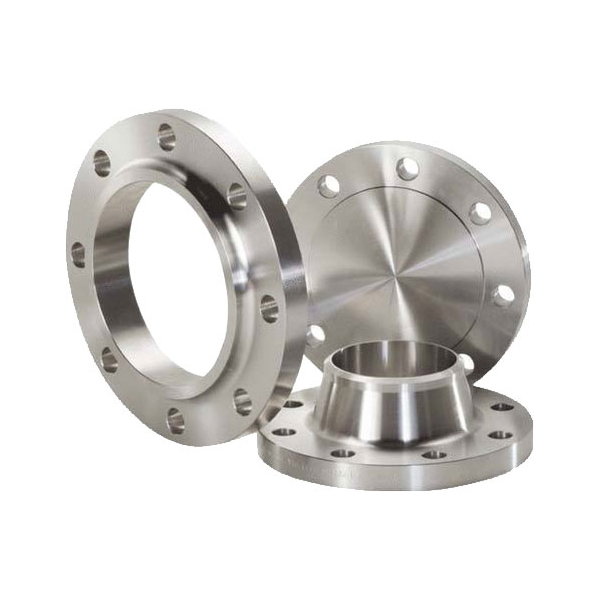
Navigating Flange Sizing and Industry Standards
A. Overview of Flange Sizing
Selecting the appropriate flange size is crucial for ensuring proper and effective pipe connections. Here’s a discussion on the importance of flange sizing for different pipe connections:
- Flow Capacity: The size of a flange directly affects the flow capacity of a pipe system. A correctly sized flange allows for efficient fluid flow without any bottlenecks or restrictions. Oversized flanges can result in reduced flow velocity, causing inefficiencies and increased pressure drop, while undersized flanges can lead to turbulent flow and increased frictional losses.
- Pressure Rating: Flange size plays a significant role in determining the pressure rating of a pipe system. The flange size should be chosen based on the desired pressure rating to ensure the flange is capable of withstanding the expected operating pressures without failure or leakage. Using an undersized flange may result in a reduced pressure rating, compromising the safety and integrity of the system.
- Pipe Compatibility: Flange size also needs to be matched with the size of the connecting pipes. It is essential to ensure that the flange and pipe have compatible dimensions to facilitate a secure and leak-proof connection. Using mismatched sizes can lead to misalignment, leaks, and structural instability.
- Gasket Seating Surface: The flange size affects the gasket seating surface area. A larger flange size provides a greater sealing area for the gasket, enhancing the effectiveness of the seal. Adequate gasket seating surface area is critical to preventing leaks and maintaining system integrity.
- System Expansion and Contraction: Flange size considerations become even more important in systems that experience thermal expansion and contraction. Larger flanges allow for greater movement and flexibility, accommodating the expansion and contraction of pipes without imposing stress on the connections. Using smaller flanges in such systems can lead to deformation, joint failure, or leakage.
- Industry Standards: Flange sizing is governed by industry standards such as ANSI, ASME, and ISO. These standards provide guidelines for selecting appropriate flange sizes based on pipe size, pressure ratings, and design requirements. Adhering to these standards ensures compatibility, interchangeability, and compliance with industry best practices.
In conclusion, selecting the appropriate flange size is critical for ensuring smooth fluid flow, maintaining system integrity, and meeting safety requirements. It is essential to consider factors such as flow capacity, pressure ratings, pipe compatibility, gasket seating surface, system expansion, and industry standards when choosing the correct flange size for different pipe connections. By doing so, reliable and efficient pipe connections can be established, minimizing the risk of leaks, failures, and operational issues.
B. Industry Standards
- ANSI/ASME B16.5:
The ANSI/ASME B16.5 standard is one of the most widely used standards for flange sizing and specification in North America. It provides guidelines for flange dimensions, materials, facing types, pressure ratings, and temperature limitations. The standard covers flanges for pipe sizes ranging from ½” to 24″.
The ANSI/ASME B16.5 standard is applicable in various industries, including oil and gas, petrochemical, power generation, water treatment, and industrial processes. It ensures the compatibility and interchangeability of flanges from different manufacturers, enabling easy integration in piping systems. Adhering to this standard helps ensure proper flange sizing, gasket selection, and bolting requirements, leading to reliable and leak-free connections.
YANHAO’s expertise lies in manufacturing ANSI/ASME B16.5 flanges. YANHAO understands the specific requirements and standards of flange sizing, shape, dimensions, and material selection enforced by ANSI/ASME B16.5. YANHAO’s expertise ensures the production of high-quality flanges that meet or exceed industry standards, providing strong and reliable connections in various industrial applications.
- Other Relevant Standards:
Aside from ANSI/ASME B16.5, there are other industry standards that are relevant in specific applications. These include:
- API (American Petroleum Institute): API standards, such as API 6A and API 605, provide specific guidelines for flanges used in the oil and gas industry. They cover flange specifications for wellhead equipment, valves, and pipeline connections in harsh and high-pressure environments.
- DIN (Deutsches Institut für Normung): DIN standards are widely used in Europe and cover flanges with DIN EN and DIN 263X series specifications. These standards provide dimensions, materials, and designations for flanges used in various industries, such as chemical, pharmaceutical, and food processing.
- BS (British Standards): BS standards, such as BS 4504 and BS EN 1092, are relevant in the UK and cover flange specifications for different pressure ratings, sizes, and materials. They are commonly used in various industries, including water and wastewater treatment, HVAC, and construction.
These additional industry standards are crucial for ensuring proper flange selection and sizing in specific applications, particularly when compliance with regional regulations is necessary.
It’s important to consult and adhere to the relevant industry standards when selecting flanges to ensure compatibility, safety, and reliable performance in specific applications.
C. Factors Influencing Flange Selection
Several factors play a crucial role in determining the appropriate flange for a specific application. These factors include:
- Pressure Rating: The pressure rating of a flange is one of the most critical factors to consider. It determines the maximum pressure a flange can withstand without leaking or failing. Selecting a flange with the appropriate pressure rating ensures the safe operation of the piping system.
- Temperature: Flange materials and gaskets must be compatible with the temperature of the fluid or gas being transported. High temperatures can affect the integrity and performance of the flange, so it is essential to choose a material that can withstand the required temperature range without deformation or failure.
- Material Compatibility: The flange material should be compatible with the fluid or gas being transported to avoid corrosion, erosion, or leakage. Different materials, such as carbon steel, stainless steel, alloy steel, and exotic alloys, have varying resistance to chemical and environmental factors. Choosing the right material combination ensures long-lasting and reliable performance.
- End Connections: Flanges come in various end connection types, such as weld neck, slip-on, socket weld, threaded, and blind. The type of end connection should align with the pipe or equipment it is being attached to. Different end connection types have specific advantages, such as improved strength, ease of installation, or positive sealing.
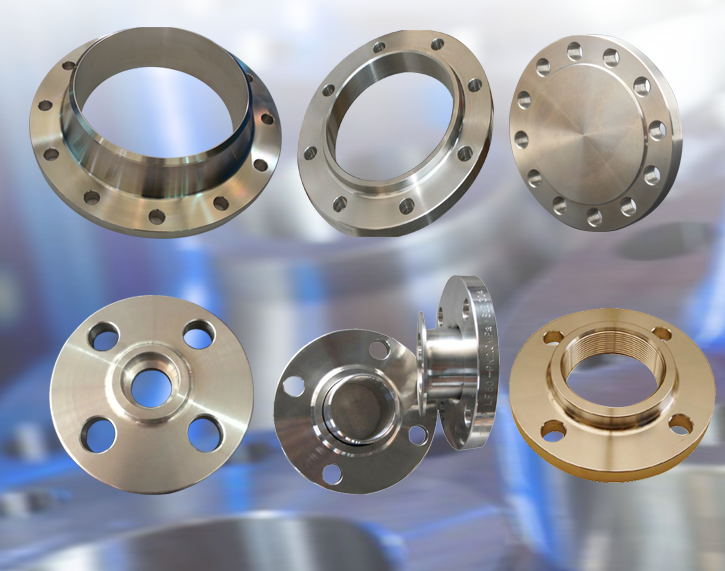
YANHAO’s Expertise and Competitive Edge
A. Manufacturing Capabilities:
YANHAO boasts state-of-the-art production equipment that enables efficient and precise manufacturing of flanges. This includes hydraulic machines, bending machines, welding machines, and forging equipment. These advanced machines ensure the accuracy and reliability of flange production.
YANHAO’s manufacturing capabilities extend to producing large-diameter and non-standard flanges. The company’s expertise in handling large-scale flange production enables them to cater to diverse industries and applications that require unique sizing and specifications.
B. Quality Control and Testing:
YANHAO places a strong emphasis on quality control to ensure the highest standards of product quality and safety. Rigorous quality control procedures are implemented throughout the manufacturing process, from raw material inspection to final product testing. Advanced testing equipment is utilized to conduct various tests, including dimension checks, pressure tests, material composition analysis, and non-destructive testing. These measures ensure that every flange meets or exceeds industry standards and customer expectations.
C. Competitive Advantages:
YANHAO enjoys several competitive advantages in the flange manufacturing industry:
- Location: YANHAO is strategically located in Hebei, China, known as a renowned hub for flange manufacturing. This location provides access to a robust supply chain, abundant resources, and reputable steel suppliers. Being in close proximity to major transportation networks facilitates efficient logistics and delivery.
- Cost-effectiveness: YANHAO maintains competitive pricing while delivering top-quality flanges. The company achieves cost-effectiveness through optimized production processes, efficient resource management, and leveraging its strong relationships with suppliers.
- Production Capacity: YANHAO has a large-scale production facility equipped with advanced machinery and a skilled workforce. This enables the company to handle both high volumes and specialized orders without compromising on quality or delivery time.
- Efficient Management System: YANHAO operates with a robust management system that ensures streamlined processes, effective communication, and timely customer support. Their dedicated team of professionals ensures every project is executed smoothly and efficiently.
- Customized Solutions: YANHAO’s ability to offer customized flanges sets it apart in the market. The company’s engineering expertise, flexibility in manufacturing, and attention to customer requirements allow them to provide tailor-made solutions that meet specific industry needs.
Overall, YANHAO’s expertise, advanced manufacturing capabilities, rigorous quality control, strategic location, cost-effectiveness, production capacity, and ability to offer customized solutions combine to give the company a competitive edge in the flange manufacturing industry.
Lewis Liu
Hello, I am Lewis Liu, a professional sales engineer with over ten years of experience in the flange fittings industry. I am highly knowledgeable in flange selection, installation, and maintenance. I am passionate about providing customers with the best solutions to ensure their pipeline systems run smoothly, safely, and reliably.
If you have any questions or concerns regarding flange fittings for your pipelines, whether it’s about selection, material choice, specification requirements, or any other aspect, please feel free to contact me at any time. I am committed to offering professional advice and assistance to help you make informed decisions and meet your needs.

